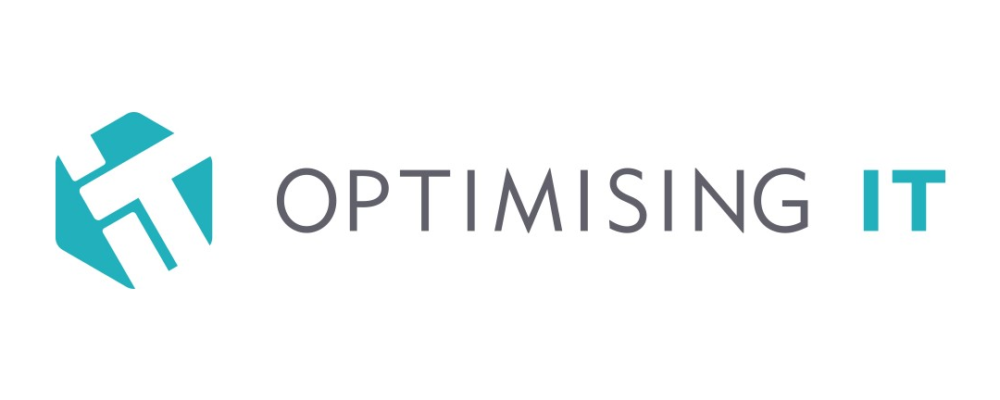
The pandemic has seen rapid adoption of remote work over the last year and a half sparking fundamental changes for businesses in all working environments. And with the growing embrace of fully remote working tools, we could see the need for remote IT support services continue to grow for decades to come.
There have already been projections revealing that remote work is quickly becoming a mainstay in the workforce. According to a report by MarketsandMarkets, the remote workplace services market is expected to increase from $20.1 billion in 2022 to $58.5 billion by 2027. This expected growth has far-reaching implications beyond workers’ physical location.
COVID-19’s Impact on IT Support and Remote Work
In 2020 businesses of all kinds saw the acceleration of the working-from-home trend due to COVID-19. Social distancing was the cause of an unprecedented amount of people relocating from an onsite office to a comfortable yet isolated home office. However, remote work peaked in the spring of 2020 when an estimated 51% of the workforce was working fully remote.
By mid-2021, 73% of the same workforce had returned to the office for at least one day per week. Although fully-remote work may be on a downward trend, approximately 88% of current work-from-home employees said they anticipate a partially remote working schedule for the foreseeable future.
Growing Trends with IT Support and Remote Work
Before the pandemic, new technologies and shifting workforce trends saw remote work becoming more common. Working remotely continues to change the global workplace offering millions of workers flexible work opportunities. Companies that know the value of remote work are adapting to the growing demand.
According to research by Global Workplace Analytics remote work has seen an increase of 140% since 2005, which is 10 times faster than any other workforce. Remote employees’ productivity is estimated to be 13% more than traditional office workers. They’re also less likely to take sick days and breaks. Businesses can save an estimated $1.4 million per 100 employees per year.
Remote work may likely become the new normal. However, whether or not people enjoy it is a point of contention. The increased freedom and lack of commuting are among the top positives according to most remote workers — with isolation being the chief negative.
Industries that currently promote remote work include:
- Online supermarkets
- Online learning enterprises
- Remote communication companies
- Technology companies
These industries are the ones to lead the new digital transformation era.
The Benefits of Remote Work
Employees and companies alike can enjoy the benefits of a remote workforce. Below are the main advantages of this growing trend.
Benefits for Employees
No More Commute
Not having to commute to work every day opens up more free time for employees, not to mention the money saved. There is no more need to rush while getting ready, possibly skipping breakfast, only to find themselves sitting in rush hour traffic. Remote work provides additional time to focus on preparation for the day, resulting in more productivity and higher job satisfaction.
Increased Autonomy
Remote work allows many employees to work a flexible schedule. Doing so enables employees to work at the time of day that works best for them. Because they can work when they are most productive, they often achieve better results. Working in an environment that is familiar and comfortable to them can also yield increased productivity.
Improved Well-being
Home tends to be a place of comfort more so than that of an office. As such, stress can be reduced while working from home. Being at home can help employees get healthier. They no longer need to rely on junk food to get them through the workday when their kitchen is only a few steps away. It’s also easier to get in some exercise during a break at home, which leads to better sleep and overall health.
All in all, remote work can result in a happier, healthier, more motivated, and more productive workforce.
Benefits for Businesses
Talent Is More Readily Accessible
Companies offering remote work and flexibility are opening their doors to employees far outside their office location. Removing geographic limitations means organisations can recruit from anywhere in the world. Because of this, companies have access to a broader crop of talent than they would otherwise, including candidates who live on the other side of the globe.
With remote work becoming the “new normal,” remote-forward companies have an edge since remote work may be the only type of work many potential employees will consider. Eligible candidates from around the world are now at the fingertips of the HR department of any remote-forward company.
Business Cost Reductions
Businesses that operate remotely save more money per year. There are fewer expenditures for office space, supplies, and materials, which could otherwise prove expensive. Teleworking can also cut employee turnover costs and create a higher retention rate.
Static Salaries
Employees may be more comfortable with taking a lower salary if it means getting to work from home. The flexibility in hours in a better work environment combined with reduced stress can easily be seen as a benefit. As a result, the employee is more productive, and the business sees reduced costs.
Environmental Impact
Office buildings can affect the environment just as much as vehicles. By comparison, office buildings consume far more energy than homes and create far more waste. That’s not even considering the pollution generated (and time wasted) driving to work each day.
Workers’ contributions to negative environmental issues, however, are much smaller when working remotely. While at the office, employees are less likely to care about their environmental impact, often because there is no financial incentive for them to comply. Working from home makes employees more conscious of the energy being used and allows them to opt for their own energy-efficient devices.
Remote IT Support Can Benefit Your Business
The workplace is almost unrecognisable from what it was in the past. It has changed dramatically in the last decade, exploding in the previous few years, and will continue to do so. Many companies have adopted a fully remote or hybrid model, which has led to fundamental changes in how they operate. Cybersecurity measures, as well as hiring priorities, have also seen a shift.
The enhancement of technology has seen IT outsourcing become incredibly popular among businesses. Companies no longer need to manage everything themselves. Now they can outsource their cybersecurity, data management, and everything else IT-related to remote IT support services while using that time to focus on their business.
Cloud computing is especially appealing to businesses looking to outsource the storage and management of their data, applications, and other IT functions. Remote IT support services that offer cloud computing provide the most current applications without high up-front licensing costs. As a result, companies can reduce overall costs and improve efficiency.
Savings
Outsourcing allows companies to use their in-house resources to handle matters specifically-related to the company’s products or services. Subsequently, costs are eliminated or significantly reduced to maintain an entire department of highly skilled employees with solid application-based credentials. Employee turnover is also eliminated or reduced considerably.
An excellent remote IT support services provider will help you save on servers, network, and miscellaneous hardware costs. It will also offer your company scalability based on the current demands of your business.
Compliance
Supply chain risk has increased, and the pressure of revenue growth has been placed on companies to adhere to IT compliance. Clients now have the power to demand that their vendors achieve minimum compliance and cybersecurity standards.
Pre-configured, third-party risk management (TPRM) platforms have increased the need for more cost-effective compliance certifications. As a result, employees require more training. Remote IT support services providers are already staffed with credentialed employees who can ensure your business adheres to IT compliance.
The Future of Remote Work
Experts expect much from the future of remote work and have these predictions for what we might see moving forward.
Greater Demand For Various Skills
Companies sought candidates with hard and soft skills before the pandemic, and they aren’t slowing down now. In fact, the demand for employees equipped with both sets of skills is an even higher priority today.
Remote working tools are tying teams together across the globe, increasing the demand for employees with online proficiency, strong communication abilities, and hard technological skills.
Soft skills such as time management, self-motivation, and reliability are also essential. Employers prefer employees with these skills, especially those working remotely, as trust plays a vital role in the arrangement. Candidates who lack these fundamental skills are less likely to perform tasks as expected.
More Jobs Overall
Professions and people are far more flexible today than in the past. Certification programs have greatly enhanced the skills and knowledge of the average worker. Remote working tools are practically second nature to the workforce of today.
New opportunities are expected to be available to the workforce at all times. This means that with the help of remote work, jobs will remain plentiful — with employees to fill those jobs, always in demand.
Hybridising the Workplace
Now that the pandemic is under control, some companies wish to maintain a remote workforce, while others choose to mix it up. The likelihood of organisations adopting a hybrid work model is high.
Hybrid work models will allow employees to select which work environment suits them best. So, they can work in the office if and when they want while still having the option to remain working remotely.
The weekly schedule is not set in stone, allowing employees to switch up their choice and remain flexible. The employee can choose whichever time frame matches their current situation and preferences, whether day-by-day or week-by-week.
Advancement in Communication Tools
The advancement of communication tools has come a long way. They have become both a tether to family and friends and an essential business tool. Remote work software is already becoming the preferred form of communication.
In the future, communication tools will evolve toward “real-time social networks,” bringing individuals closer together for both collaboration and conferencing. This extends to the potential for virtual and augmented reality solutions as well.
Popular application scenarios for these devices have always been lacking; however, they are in abundance these days. HoloAnatomy is one such application that drastically changes how medical students learn, by allowing them to view and analyse 3D holograms of the human body.
Easier Workflow
Workflow will continue to evolve to see companies improve the processes of working remotely in an attempt to unlock employees’ full potential while making interaction with technology more accessible and reliable. New remote technologies will see the end of burnout and an increase in productivity. These technologies will help employees complete tasks, achieve goals, and reach a healthier work-life balance.
2027 Will Be A Good Year For Remote Work
All industries have seen an increase in remote work adoption since the COVID-19 pandemic. Understanding why remote work has become so popular is simple: Employees prefer the comforts afforded them working in their homes, and employers like to save and make money.
Remote working solutions have made a significant impact on businesses as a whole. Most of which can be considered for the better. A rising number of investments have been made to improve remote workplaces so companies can remain competitive.
As technology advances, so too will the workforce. Employees who weren’t tech-savvy before the pandemic are now earning cybersecurity certifications. Remote work offers a better employee experience and reduced infrastructure costs for businesses. It’s a turning point in how industry workforces will operate moving forward. At Optimising IT, we have the experience, the resources, and the desire to help companies of all sizes with their IT challenges so they can focus on their business.













